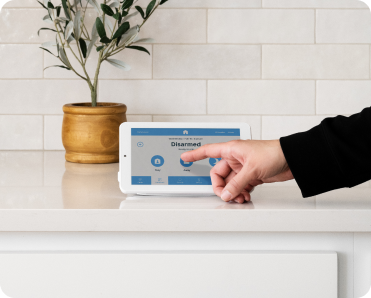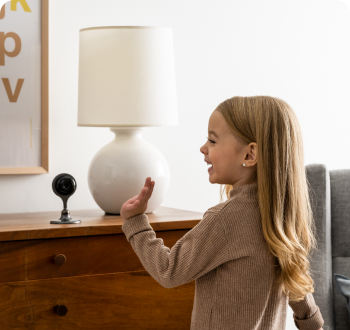How to Open A Padlock Without a Key
Link Copied
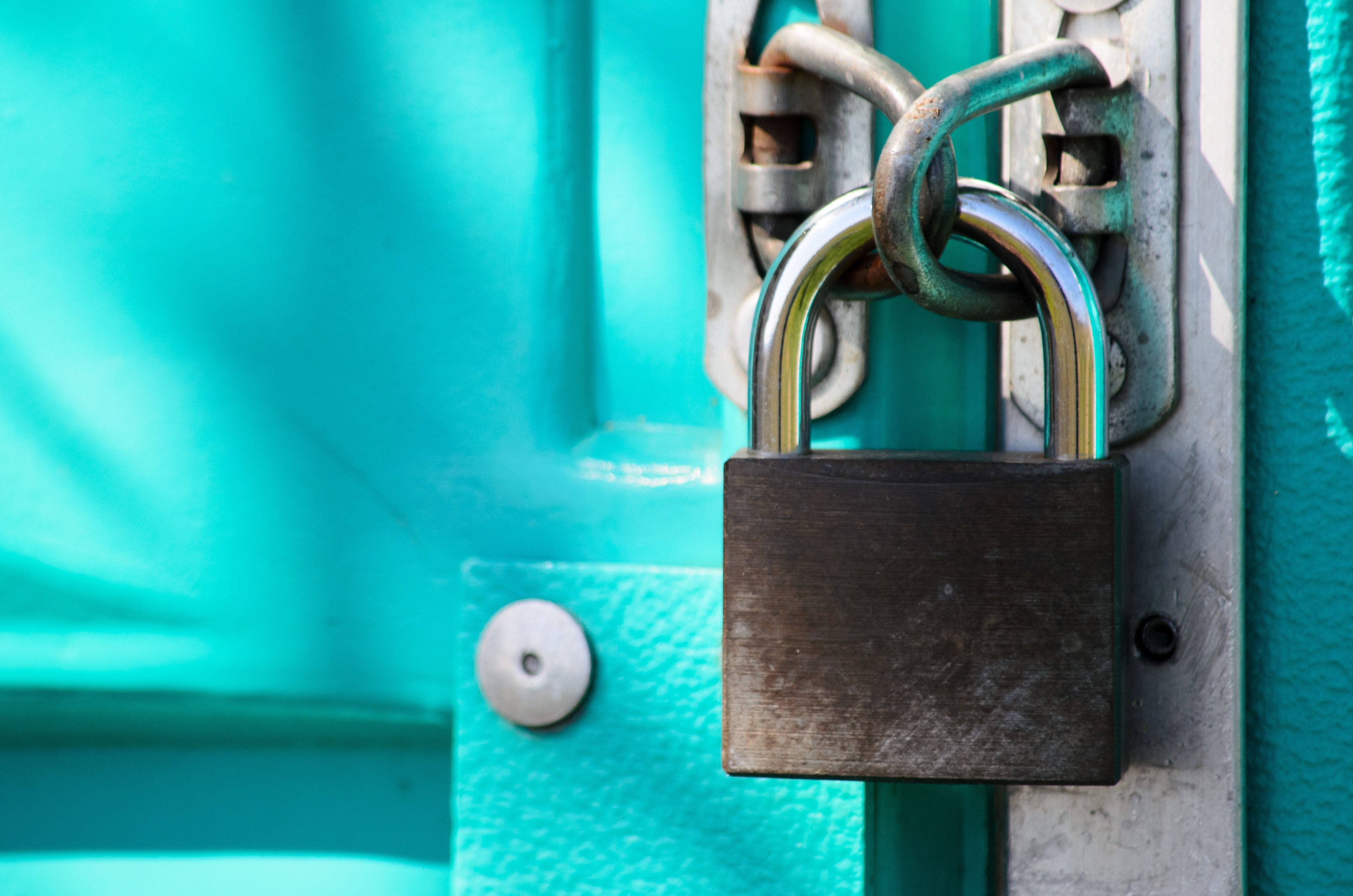
Have you ever locked something important in a box with a padlock on it? And then lost the key? And you didn’t even realize that it was lost until you had to open the box?
Unfortunately, locks often thwart us in our desire to keep our personal property secure. It’s easy to forget the combination on a lock you never use, and it’s even easier to lose a small padlock key. So what do you do now? You have a few options, and we'll cover those in this article.
Opening a padlock without a key may seem like a strange thing for a security company to be writing about, but whether or not you’ve ever lost the key to a padlock, understanding how to pick a padlock can help you to become a more educated consumer when it comes to picking out locks for your home’s needs. In this post, we'll first outline some basic ways to open a locked padlock, and then we will discuss some of the features that make a padlock more secure.
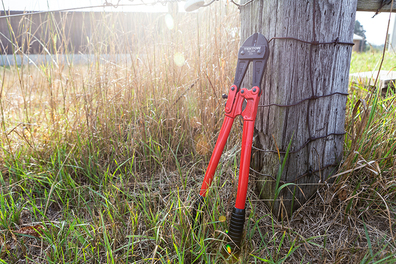
The Bolt Cutter Method
This is perhaps the quickest way to open a padlock when you are missing a key, but, it unfortunately means that you will lose the use of the lock in the process.
To open a lock using bolt cutters, position the shears on either side of the shackle (the u-shaped upper part of the lock). Squeeze the handles of the bolt cutters together until the shackle is severed, then remove the lock from the door or box you are trying to open. A wheel grinder can also cut through a steel lock pretty quickly, although this is quite noisy.
The Shim Method
A shim is a small piece of metal that is shaped in such a way that you can maneuver it into the top part of the lock, where the shackle meets the body. A padlock shim should have two thin sides, as well as a curved thicker part in the middle.
You should insert the thicker part of the shim into the body and wiggle the shim back and forth inside of the lock until you hear the latch click. At this point, the lock should spring open and you should be able to access whatever materials you are trying to get to.
Lock Picking Method
There are several different ways to pick a lock. This method requires using a tool to manipulate the springs in the lock through the keyhole.
According to an expert lock picker, you will first begin picking the lock by taking a tension wrench and placing it at the bottom of the keyhole. With just the right amount of pressure, this causes the plug of the lock to rotate slightly, catching the first pin when you push it above the shear line with your pick.
You will then use the pick and the tension wrench to complete the same feat for as many pins as are in the lock. You will need to move the pick back and forth in order to get it to catch all of the pins. Be careful not to apply too much pressure to the wrench, as this can cause the lock not to open properly.
(Lock picking tips from: “How to Pick a Lock.” The Art of Manliness, March 12, 2022. https://www.artofmanliness.com/articles/how-to-pick-a-lock-pin-tumbler-locks.)
The Master Key
A master key is a key that can open multiple locks within a home. Master keys can be made by most locksmiths and are a bit more expensive than your average lock. You can have a master key made as a fail-safe in case you lose your primary key. If you have a master key, you can simply insert it into the lock and it should quickly click open.
Some good places to purchase a master key include Ace Hardware, Walmart, and Target. Be aware that you may need to change many of the locks in your home in order to get the master key to work.
Call a Locksmith
If you have already tried most of the above things to get your lock to open, you should call a locksmith to get the lock off. It is likely that he will bring bolt cutters and simply replace the lock, but it is possible that he could make a new key for you, depending on the kind of lock.
Locksmiths are more familiar with opening locks than just about anyone. Locksmiths are trained professionals in the creation, installation, and repair of locks. Most locksmiths will charge $50-100 to come and fix a door lock, and less to open a padlock.
All locksmiths are required to complete some kind of training program and register with the state. Locksmiths are also required to purchase insurance for their business. If you find that you can’t get your lock open for the life of you, a locksmith is your best bet.
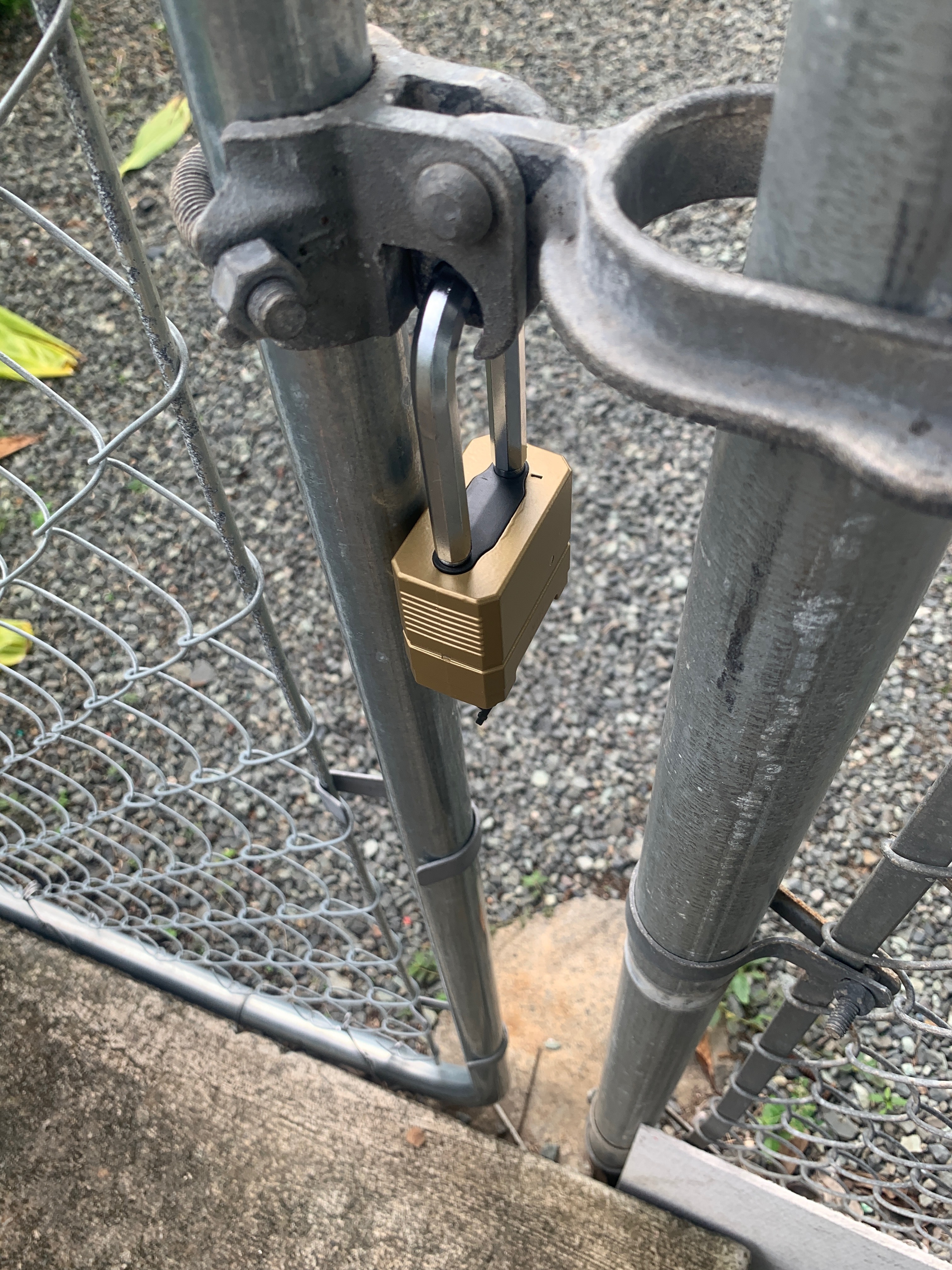
How To Open A Padlock Without A Key And Without Breaking It
We've given you a few options to open a padlock, however, many of them involved breaking it. Which is fine if that's a last resort. Plus, if you don't have the key then what's the point in keeping it? However, perhaps you want to try other methods first, or you simply don't have access to the keys right now, but will in the future. Here are a few ways to open a padlock without a key and without breaking the padlock.
Using a Knife
This method can be tricky, and it may only work if you have the right sized knife and utilize the correct technique. But it's definitely worth a try. If you have a knife that's small enough to fit into the padlock's keyhole, you're in business.
Start by carefully inserting the knife into the lock, manuvering until it touches the back of the lock. Continue to be as gentle as possible so as not to damage any piece of the lock. This is the part where you try turning the knife like you would a key. Only turn slightly, then jiggle the knife. Yep, that's right.
Basically the method is finding the right spot of turn, plus the right wiggle force. It could possibly set off the right internal mechanisms and open the lock, as a key would.
Using A Wire Clothes Hanger
First things first, you need a wire clothes hanger. Double check that the tip of the wire is thin enough to fit into the lock you're trying to open. If it doesn't, then move onto a different method.
To use the clothes hander, straighten it so you can use the end. You could even cut off the end so you are only using a small portion so it's easier to work with.
Depending on the side of the keyhole and the circumference of the wire, you can employ the same method above (see Using a Knife), for example inserting the wire into the keyhole, turn, and jiggle.
Jimmying a Tumbler Lock with a Screwdriver
Generally speaking, a screwdriver is a good tool when trying to open a lock, but not by itself. Because of its shape, it can help turn the lock, but not reach where the pins are and jiggle them free. So you'll also need to use another tool, like a "rake" or other small tool to rake against or "jiggle" the pins.
Desperate Measures
If you'ver tried all the methods above but couldn't get the padlock open, you may be getting desparate. Sometimes, the thing that the padlock is protecting is something we need to access right away. If you're getting to that point, here are our desparate measures methods for opening a padlock without a key.
Removing The Hinges
If the place your padlock is securing is a gate or cabinet and has hinges, you can bypass the lock completely. Rather than trying to open the padlock or even breaking it off, you can remove the hinges.
You'll likely need a screwdriver or cordless drill to get the job done. The great thing is, you can put the hinges back when you're done usually without any damage incurred. However, you still have the issue of the padlock, but hopefully you locate the key or find another method to open it.
Drilling The Lock
The first consideration for this method is safety. We encourage you to wear goggles to protect your eyes, and be cautious as you approach every step. The biggest thing to know about this approach is, you can't just drill anywhere. You need to drill in the right location.
First, you'll need a drill with a cobalt or carbine drill bit, plus a screwdriver. Basically, you'll drill straight through to break all of the pins, then use the screwdriver to turn and unlock.
Using A Hammer
If you're feeling frustrated, then you might be ready for this method. Take out all your aggression by using a hammer to open your padlock. With safety in mind, we recommend using gloves so you get better grip and protect your hands.
The best tip we can offer for this approach is to keep the padlock as still as possible. If it's locking a chain, pull the chain taut in order to increase the tension. The next step is to simply hammer away at the padlock, specifically where the ring clicks into the sqauare portion, until it unlocks.
Breaking a Padlock with a Pair of Wrenches
This can be a surprisingly simple method of opening a lock quickly. The key is leverage and force.
Basically, you hold one wrench on the square portion of the lock. Then use a second wrench and lean into onto the first wrench, utilizing leverage to help get it to meet up with the loop. Now you can use the second wrench to force it open.
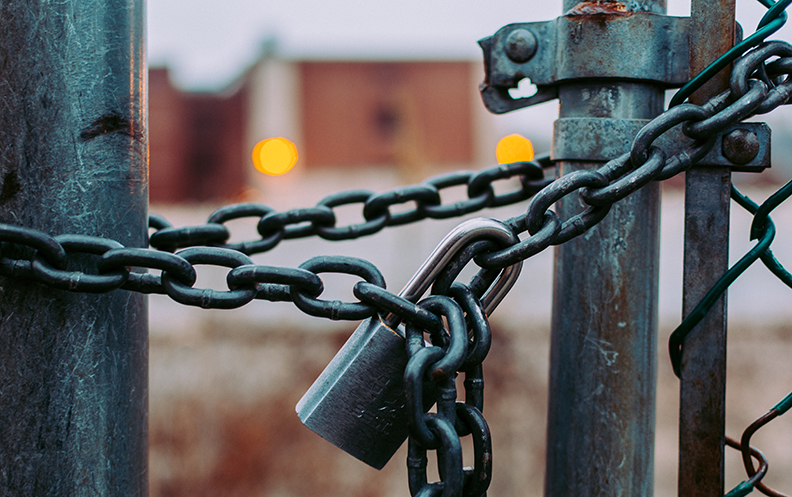
Finding the Most Secure Locks
Hopefully this post hasn't totally ruined your sense of safety and well-being. There are several kinds of locks that can be used that are much harder for criminals to pick.
Unfortunately, this also probably means that these locks are harder for you to pick as well, which can cause all kinds of problems if you lose the key or forget the combination. So, if you're going to get a heavy-duty lock, make sure that you have a secure and easy to remember location in which you can keep the combination of the key.
Padlocks come in differing sizes and levels of security. A simple thing you can do to get a little more security for your lock is to pick a lock with a thicker shackle, preferably steel. Some padlocks have thin shackles (occasionally made of wire), and these are extremely easy to cut through using an ordinary set of wire cutters or even a serrated knife or saw. A thicker steel shackle will require much more effort to cut through.
Another thing you can do that can protect against keyhole lock picking is to use a combination padlock. These are great because as long as you know the combination, you can open the lock without needing a key. These locks are still pickable using other methods, but it is much more difficult to do.
The Electronic Padlock: The Wave of the Future
Electric locks utilize one of two different kinds of technology to work: either magnets (these locks are referred to as electromagnetic locks) or motors. Either system uses electricity to power the lock and makes it possible for the lock to be much harder to access.
Electronic padlocks do away with the need for a key, instead responding to a magnet or a signal in a sort of fob that can be attached to your phone, your wallet, or your keys. A popular electronic padlock is the eGeeTouch smart padlock, which simply requires that you touch your fob to the padlock, and the padlock opens.
Some smart locks can now be integrated with home automation technology. Most of these are door locks rather than padlocks, but they offer a new kind of security. Some smart locks use fobs, and others require a combination to open.
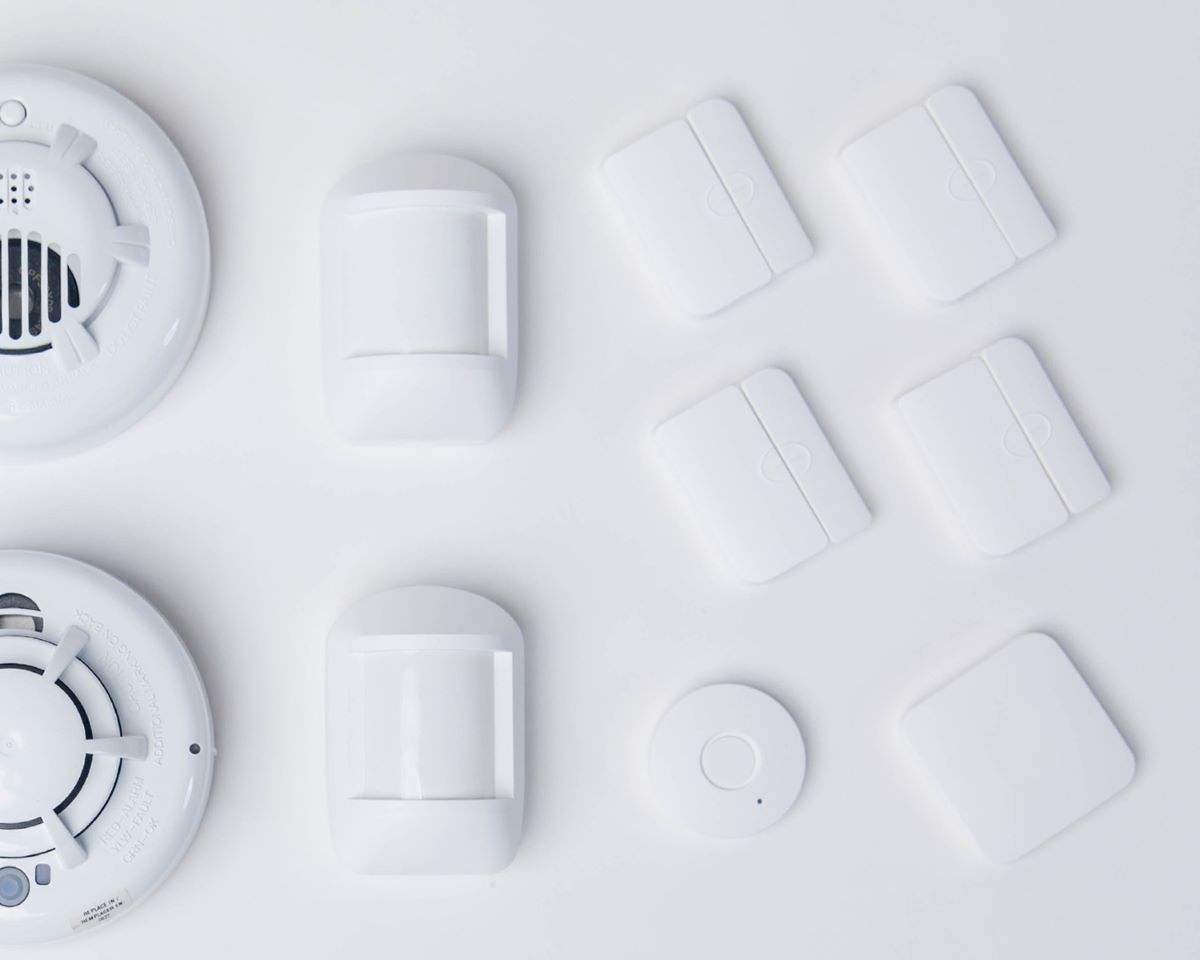
The Bottom Line: Your Security
At the end of the day, locks aren’t a 100% guarantee of safety. While they can act as a deterrent on some level, many criminals will still easily be able to get past a lock. This is why it can be a great idea to have a second line of defense against burglars. At Cove, we offer a variety of products to increase your home security:
-
Central Touch Alarm Panel: Cove’s central system a touchscreen control panel. Set up is quick and easy, and can take as little time as 10 minutes to finish. With 4G cellular monitoring, we’ll always have an eye on your home security, even if your phone lines go down.
-
Cameras: Cove offers a YI indoor camera with good surveillance capabilities, night vision, and motion activated sensors.
-
Motion Sensors: These sensors will detect movement within your home.
-
Door, Window, and Glass-break detectors: These will monitor any unusual activity around your doors and windows.
-
Environmental Detectors: Cove offers a fire detector, flood detection, freeze sensors, and carbon monoxide detectors. The freeze detector acts as a sort of smart thermostat to catch if your home drops below a certain dangerous level.
-
Medical Button: Cove is a full-life security system, meaning that we also want to take care of your health as well as your safety. With our medical button, you and your loved ones are just a touch away from emergency help.
-
Alarm Monitoring Service: Cove offers a professional monitoring service with all the benefits of a professional security system and for the price of a DIY system.
Each sensor and camera is individually priced if you build your own package, which has the potential to save you a lot of money in the long run. Cove also frequently has sales on equipment, which can allow you to build your ideal system for an even lower price.
Cove LiveAssist is available and linked through your touch panel, which means that you will always be able to reach the emergency personnel you need, whether it is a burglary or a medical emergency. Our team is available 24/7, and our system constantly monitors your home to ensure your safety.
You should always feel safe in your home. And we can help with that.
Ready to get started?
Take this short quiz to build your customized system today!
Takes less than a minute
